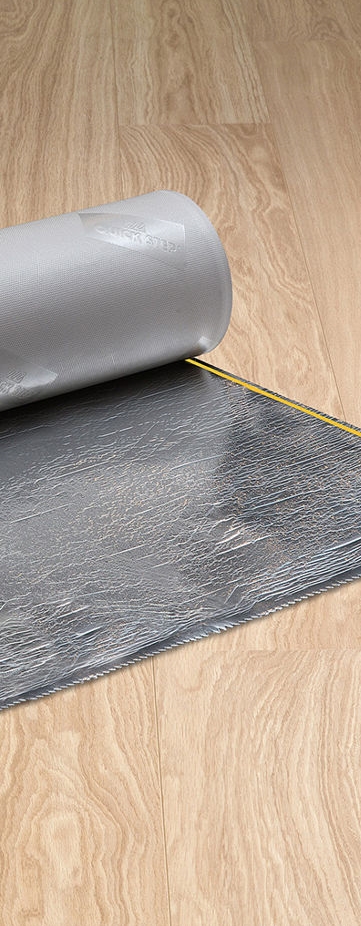It can be hard to keep cosy through the winter - sometimes it can feel like your radiators just can't get hot enough. One way to keep your home warm and keep your energy costs low is to make sure your floor is insulated.
Flooring insulation will stop heat from being drawn down by the cold foundations of your home. Equally, if you own a multi-storey home, insulating upstairs can prevent heat from escaping the lower floors and gathering on the top floor. This guide will share tips on how to insulate your luxury vinyl, engineered wood and laminate flooring.
What is the best insulated underlay?
The most important factor for insulating your room is your choice of underlay. An underlay is a sheet of material which is laid underneath the boards of your floor. Not all floors can be laid with an underlay, but those that can are known as Floating Floors. All underlays will offer some insulation, but as a general rule, the thicker the underlay, the more heat they'll keep in. If you have underfloor heating, however, you'll want to go for a very thin paper/felt underlay, which will let the heat pass up through.
Read more - Which underlay do I need with my floor?
How to insulate engineered wood flooring
Engineered flooring is made up of a surface layer of solid wood on top of strong supporting layers of either plywood or MDF. Because it's made from real wood throughout, engineered flooring is naturally insulating and warm underfoot. As well as this, engineered flooring is a floating floor, so it can be laid over an insulating underlay. The clever construction is designed to be able to withstand changes in temperature in your home with minimal expansion, meaning it's safe to lay even if you've got underfloor heating, or if you're the kind of person to put the radiators on full every evening.
How to insulate luxury vinyl flooring
If you've ever had a ceramic or stone tile floor, you'll know just how cold these are underfoot. This is because ceramic and stone don't retain heat like other materials. Luxury Vinyl Tiles (LVT) are the next generation of vinyl floors, made from a very hard, tough PVC. LVT floors are a great alternative to ceramic or stone tiles - they can look completely convincing, but feel much warmer to walk on. If you're after an extra level of insulation, we'd recommend an LVT floor with a locking mechanism, as these are installed with an underlay.
How to insulate laminate flooring
Laminate is made of HDF, which retains heat just like any other wood. In many ways, the advantages of laminate are similar to engineered flooring when it comes to insulation - including that both are floating floors. For maximum results, choose a thicker laminate floor. We have a wide range of laminate floors that are at least 9mm thick, which will really seal that warmth in.
How do you insulate under existing floor?
If you want to cut your energy costs and insulate a floor that's already laid then you'll need to lift your floorboards. Next, lay down your flooring insulation in-between the floor joists. And then put the floor back in place. You may need to finish and seal your floor again depending on the material. Flooring such as click vinyl flooring will make this process simple.
Does insulating your floor make a difference?
Insulating your floor can make a positive difference to how much money you spend on heating your house each month. More benefits of flooring insulation include:
- Reduced carbon emission
- Increased underfoot comfort
- Reduced heat loss which in turn helps to save you money
- Improved EPC ratings of your home
- Flooring insulation requires no maintenance is required
Read more - Which underlays reduce sound?



